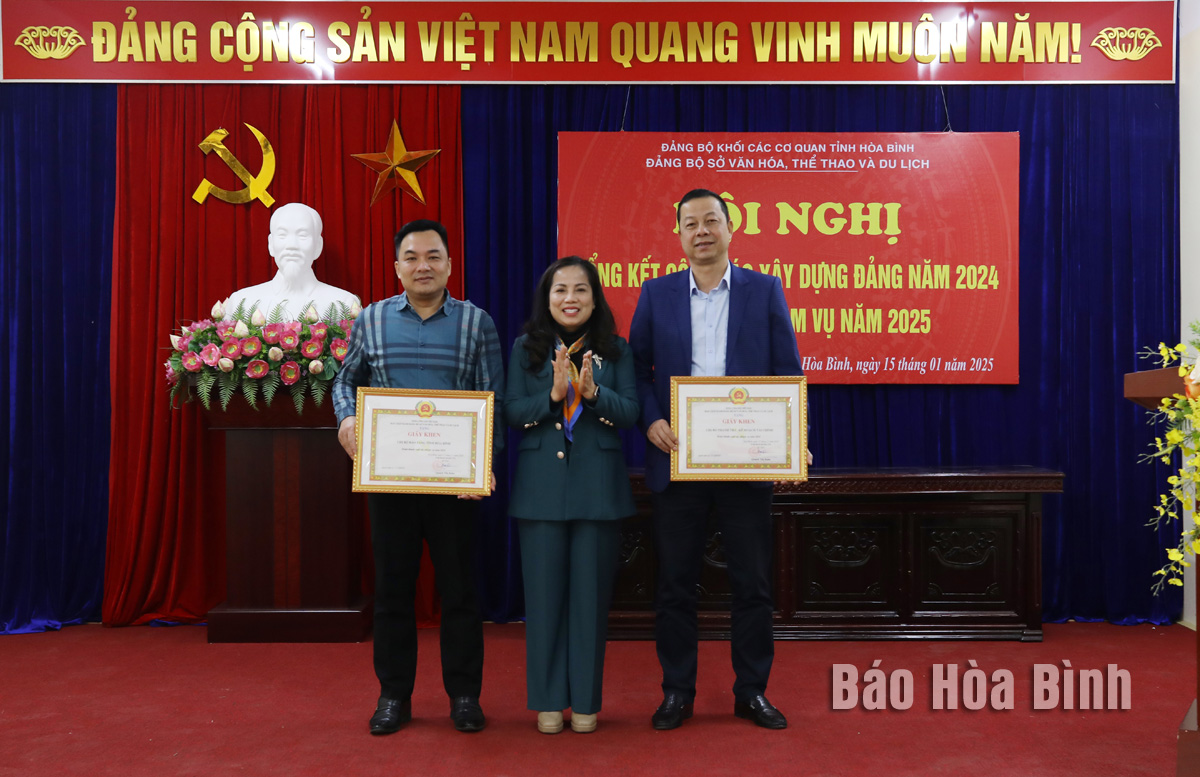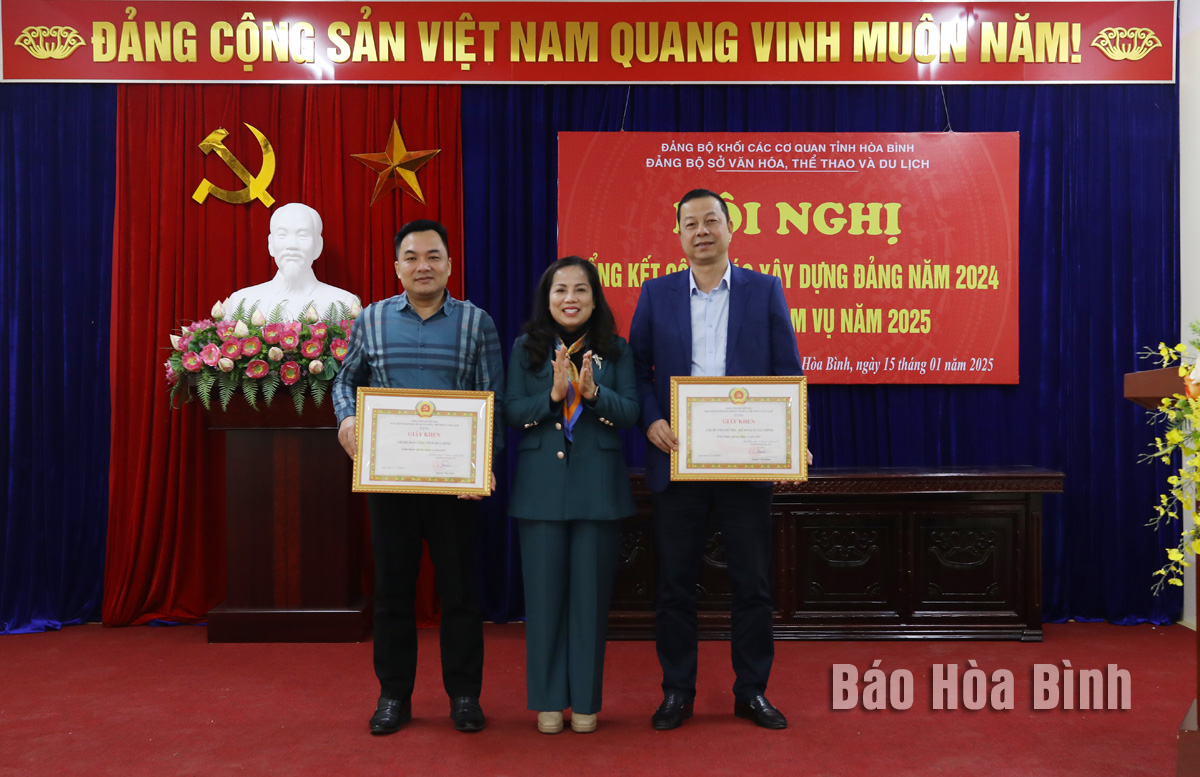
The Party Committee of the provincial Department of Culture, Sports, and Tourism convened a meeting on January 15 to evaluate Party building work in 2024 and set tasks for this year.

Leaders of the Department of Culture, Sports and Tourism of Hoa Binh province awarded certificates of merit to two party cells that successfully completed their tasks in 2024.
In 2024, the committee focused on leading and directing its cells in
building the Party and promoting the role of setting examples among its
members.
Efforts to enhance political and ideological
education for Party members, civil servants, public employees and labourers in
agencies and units, contributing the common achievements of the province. Last
year, Hoa Binh had Trai hamlet cave and Vanh village stone roof recongised as
special national heritage sites.
Other notable accomplishments included the
successful hosting of the Hoa Binh Culture and Tourism Week, provincial
athletes securing 135 medals, and a 9.9% year-on-year increase in tourist
arrivals to over 4.3 million and a 17.9% growth in tourism revenue to 4.7 trillion
VND (186 million USD) in revenue.
In 2025, the Party Committee will continue
leading the serious implementation of the Party Central Committee's directions
and conclusions regarding the restructuring of the organizational apparatus to
make it streamlined, efficient and effective.
Other goals include directing the organisation
of Party congresses at various levels and enrolling at least four new members.
As part of the conference, the committee
presented the certificate of merit from Party Committee of the provincial
Agencies' Bloc to an outstanding Party member during the 2020–2024 period as
well as the certificate of commendation to two Party cells and 22 members for
exemplary performance in 2024.
Hoa Binh province has carried out multiple programmes and initiatives to revive its cultural heritage which has gradually fallen into oblivion through the ebbs and flows of history.
The most prominent and defining feature in the prehistoric era of Hoa Binh is the Hoa Binh Culture. The Culture was first discovered in Hoa Binh. The significant prehistoric culture represents not only Vietnam but also Southeast Asia and southern China. Through excavations of cave sites in the limestone regions of Hoa Binh, French archaeologist M. Colani introduced the world to a "Stone Age in Hoa Binh province – Northern Vietnam" in 1927. On January 30, 1932, the First Congress of Far Eastern Prehistorians, held in Hanoi, officially recognised the Hoa Binh Culture.
Known as the "Land of Epic History”, Hoa Binh province, the gateway to Vietnam’s northwest, boasts a strategic location and a unique cultural tapestry woven by its ethnic minority communities.
The People's Committee of Luong Son District recently held a ceremony to receive the certificate recognizing Sau Communal House in Thanh Cao Commune as a provincial-level historical and cultural site.
Recognising the importance of cultural heritage preservation in protecting and promoting the value system of Vietnamese culture, and serving socio-economic development in the new period, Party committees and local administrations in Hoa Binh province have identified it as a key task in the cultural development strategy. The province has been making efforts in mobilising resources, creating consensus among people and engaging ethnic communities in preserving and promoting cultural identity.
Hoa Binh province has captured growing attention both domestically and internationally for its distinctive cultural heritage and rich history. Most notably, it has been renowned for its famous Hoa Binh culture, considered the cradle of ancient Vietnamese civilisation. Looking ahead to significant milestones in 2025 and the 140th anniversary of province establishment in 2026, Hoa Binh Newspaper presents a comprehensive overview of the province's development across economic, social, cultural, tourism, and security domains.



